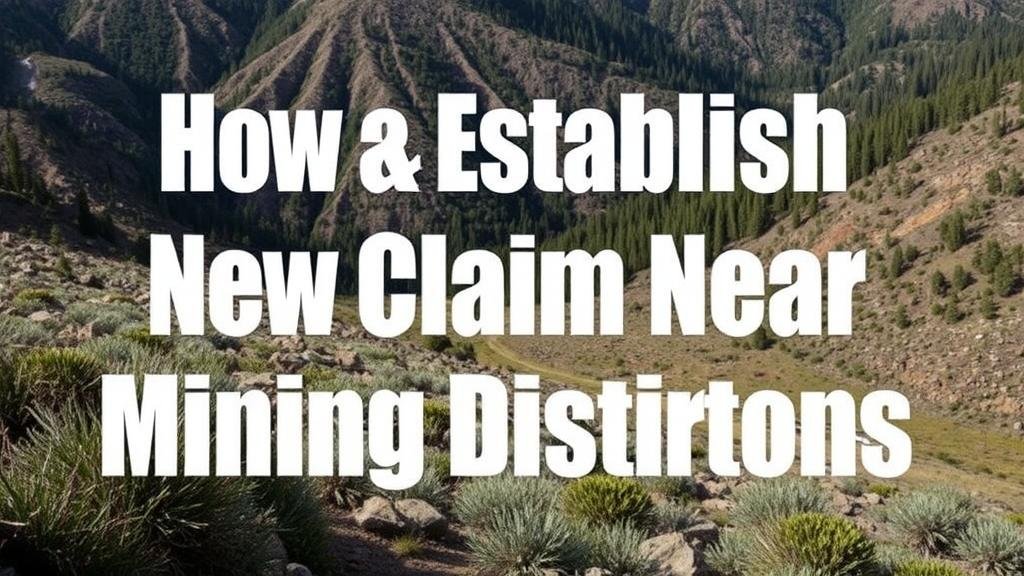How to Establish a New Claim Near Abandoned Mining Districts
How to Establish a New Claim Near Abandoned Mining Districts
Establishing a new mining claim near abandoned mining districts can be an intricate process that requires careful planning and an understanding of legal protocols. This article outlines a systematic approach to navigating the complexities of mineral claims, addressing key factors that aspiring miners must consider.
Understanding the Legal Framework
The first step in establishing a new claim is to familiarize yourself with the legal environment surrounding mining claims. In the United States, mining is governed by both federal and state laws. General Mining Law of 1872 allows individuals to stake a claim on unpatented lands and extract minerals. But, understanding the specific regulations of the state where the claim is to be established is crucial.
For example, each state has its own regulations regarding the staking of mining claims, fees, and required documentation. Also, some states may have local regulations that impose restrictions based on land use or environmental impact.
Identifying Potential Mining Sites
Before formally staking a claim, prospective miners should conduct thorough geological assessments. This involves studying geological maps, historical mining records, and mineral inventories of the area:
- Geological Surveys: Use data from the United States Geological Survey (USGS) to understand the geological characteristics of the land.
- Historical Records: Review historical mining activity in the region to identify what minerals were extracted and the associated economic viability.
- Sample Collection: Collect samples in the vicinity to assess mineral composition and viability for extraction purposes.
Real-world example: The Nevada Mining District illustrates this approach well. Here, miners often reference historical records, which have led to the revival of dormant mining sites through modern technological enhancements.
Staking a Claim
Once a viable site is identified, the next step involves staking the claim. This process typically includes:
- Physical Markers: Marking the corners of the claim with posts or other permanent markers.
- Submitting Documentation: Filing the claim with the local Bureau of Land Management (BLM) or appropriate state authority, including paperwork that describes the claims boundaries and the minerals sought.
- Paying Fees: Paying the prescribed fees, which vary by state.
It is important to note that a mining claim does not guarantee ownership of the land itself. Instead, it provides the right to extract minerals from that land itself.
Understanding Environmental Regulations
Mining operations, even small-scale ones, can have significant environmental impacts. Abandoned mining districts often have existing environmental degradation, which mandates careful compliance with federal and state environmental regulations. Key considerations include:
- Environmental Assessments: Conducting an environmental impact assessment (EIA) prior to beginning extraction operations.
- Reclamation Plans: Outlining plans for land restoration following mining activities as mandated by state laws.
For example, under the National Environmental Policy Act (NEPA), federal projects or activities that could potentially affect the environment require an EIA. Also, compliance with regulations from the Environmental Protection Agency (EPA) is essential for sustainable operation.
Community Engagement and Ethical Considerations
Establishing a mining claim also involves engaging with local communities and stakeholders. Mining operations can significantly impact local economies and ecosystems, making community involvement a vital component of the mining process. Key points include:
- Community Meetings: Holding informational sessions to explain the mining operations and listen to community concerns.
- Partnership Opportunities: Exploring potential partnerships with local businesses and organizations, fostering goodwill.
Case study: The resurgence of mining in the Appalachian region emphasizes the importance of community engagement. Through local partnerships, mining companies have successfully navigated community apprehensions while promoting sustainable practices.
Actionable Takeaways
Establishing a mining claim near abandoned mining districts is a multifaceted process that requires a thorough understanding of legal, geological, and community factors. Here are key actionable takeaways:
- Conduct comprehensive geological research and historical mining assessments to identify viable sites.
- Familiarize yourself with local and federal laws governing mining claims and environmental protection.
- Engage with local communities proactively to ensure transparency and address concerns.
- Prepare for rigorous environmental assessments and create reclamation plans to enhance sustainability.
By taking a strategic and informed approach, aspiring miners can successfully establish claims and contribute to responsible mining practices in abandoned districts.



